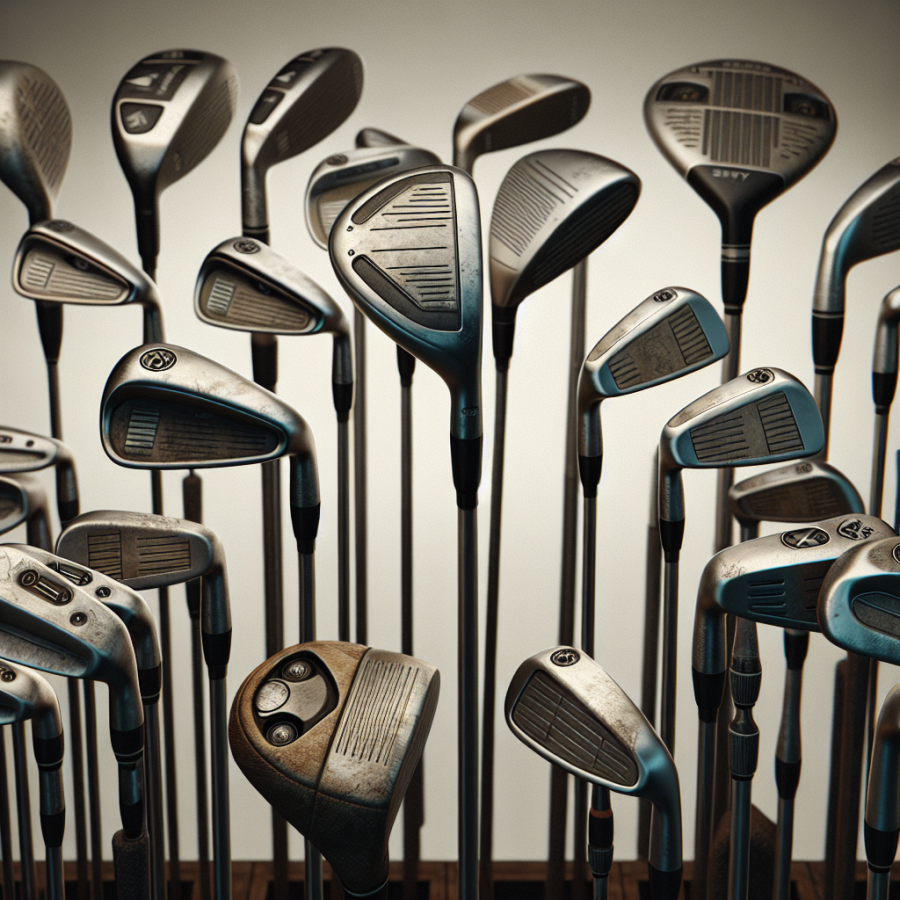Breaking Down the Different Types of Clubs in a Golf Set
Whether you're a novice getting ready to step onto the green for the first time or an amateur trying to improve your swing, it's important to understand the different types of clubs in a golf set. Each type of club is designed for a specific purpose and using the right club at the right time can drastically improve your game. Here's a breakdown of different types of clubs in a typical golf set and how they can help you navigate the course with ease.
1. Putter: The most used club in a golf set, a putter is designed specifically for short distance shots intended to get the ball in the hole. It has a flat face which allows for precision and control, often used on the green to finish off a hole. They come in various sizes and designs, but the main goal remains the same – get the ball into the hole with a gentle tap.
2. Wedges: Wedges are used for short approach shots into the green, high shots over obstacles, and escaping from sand bunkers. They have a higher loft than other irons and help to get the ball higher into the air leading to a steep downward trajectory. The four main types of wedges are pitching wedges, gap wedges, sand wedges, and lob wedges.
3. Irons: Irons are versatile tools in a golfer’s arsenal. They are used for shots where distance and control are necessary. They vary in design but typically feature a flat, angled face and a shorter shaft. Irons are available in numbers 1 through 9, with lower-numbered irons having less loft and therefore hitting the ball further.
4. Woods: These are the powerhouses of a golf set, designed to hit the ball long distances from the tee or the fairway. Despite their name, woods are usually made from metal these days. A 1 wood, or,"driver," is often used for the starting shot of each hole due to its power and distance capabilities.
5. Hybrids: These are a newer class of club, designed to replace the harder-to-hit long irons. They combine elements of both woods and irons to create a versatile club that can be used in a variety of situations. Hybrids are often numbered in a way that corresponds to the iron they're intended to replace.
6. Specialty Clubs: These include a variety of clubs designed for very specific situations.
Read also:
Unlocking Achievements in Health: The Revolutionary Impact of Sports Medicine
Why the 14-Club Rule is Essential in Golf: A Closer Look
The 14-club rule is perhaps one of the most important regulations to understand in the sport of golf. Introduced by the United States Golf Association (USGA) in 1939, this rule extends worldwide and sets a cap on the number of clubs a player can have in his or her bag during a round of golf.
The question that often arises around the 14-club rule is, why such a specific limitation? The answer bridges the gap between maintaining golf as a game of skill and avoiding the undue advantage of having superabundant selections of clubs.
One of the major goals of the 14-club rule is to maintain the challenge of the game. Part of the beauty and sophistication of golf lies in the player’s ability to assess every situation, choose the right club, and deliver a successful shot. If a golfer were allowed an excess of clubs, the sport's essence would reduce to simply picking the perfect club for any particular shot. This might increase success rates, but it would diminish the skill factor, making the game less challenging and therefore less exciting.
Another reason for the 14-club rule is to prevent the games from getting delayed. The more clubs a player carries, the longer they would take to make a choice, thus slowing the pace of the game for everyone on the course. By limiting the number of clubs, it balances the need for variety with the necessity to keep the game moving at an efficient and enjoyable pace.
The 14-club limitation is also designed to prevent an unnecessary arms race in the golfing world. Without a limit on club numbers, wealthier players may have an undue advantage by affording a greater number of clubs - which could lead to a technological advantage. The rule ensures all players, regardless of financial resources, can compete on an even playing field.
Understanding the complexities of each golf club is also crucial. The 14 clubs in a golf set typically include three woods, eight irons, and a putter. The remaining can be a mix of hybrid clubs, wedges, and additional irons or woods. Each club carries its strength and serves specific situations.
The Driver or 1-wood is specially designed for distance and is most commonly used at the tee on long par 4 and par 5 holes. Conversely, irons excel in accuracy and are used when golfers are less than 200 yards away from the green.




